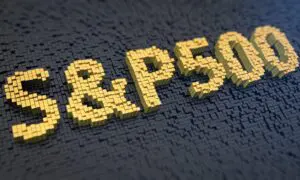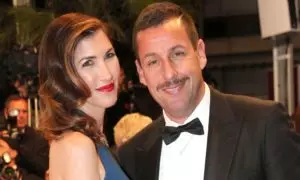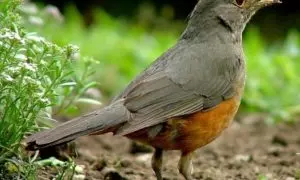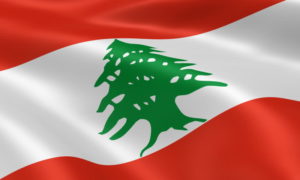Today we will let you know about some awesome and interesting facts about Netherlands, you will be amazed after reading these facts about Netherlands.
30 Interesting facts about Netherlands
Country & Population
- The Netherlands has the highest population density (493 inhabitants per km ² – water excluded) of any European country of more than one million inhabitants. In the world, only Bangladesh and Taiwan, among the larger countries, have a higher population density.
- Holland and the Netherlands are not synonyms. Holland is only a small part of the Netherlands (two out of 12 provinces), although the most densely populated. The citizens of the Netherlands ( Nederland ) are therefore not Dutch, but Dutch. In the same way, the official language of the country is not Dutch, but Dutch ( nederlands ), Dutch being one of its dialects, like Flemish in Belgium.
- The Netherlands owes its name to the topography of the region. About half of the national surface is located less than one meter above sea level. The highest point of the country is 321 meters above sea level.
- The Dutch are the tallest people in the world, with an average height of 184 cm for men and 170 cm for women.
- According to a 2007 UNICEF report on child well-being in rich countries , the Netherlands is the best country to live for children.
- The Dutch have the lowest incidence of lactose intolerance on Earth – only 1% of the population.
- The village of Giethoorn, in the province of Overijssel, has no roads. All transportation is by water on its many channels. It is known as “Venice of the Netherlands”.
History
- The city of New York began as a Dutch colony called New Amsterdam. Many names of places in New York recall the Dutch origin of the city, such as Flushing in Queens (famous for Flushing Meadows), named after Flushing (Vlissingen) in the Dutch province of Zeeland.
- The Dutch national anthem, Wilhelmus, is the oldest in the world. It was written and used from 1568, although it was officially adopted in 1932. The national flag of the Netherlands dates from 1572 and is the oldest tricolor flag in the world.
- Gin was invented in the Netherlands under the name of jenever (which gave gin in French). At the base, the drink was sold as a medicine at the end of the sixteenth century.
- The orange carrots appeared in the Netherlands in the 16th century. Before that, the carrots were white, yellow, black, mauve or red. It would seem that the orange carrots were grown in honor of the Orange House, which led the revolt of the beggars against Spain and later became the Dutch royal family. Orange is still the official color of the Netherlands and a symbol of patriotism. The Dutch football team is wearing bright orange jerseys. And the largest financial institution in the country, ING Group, displays the national colors on all its brands.
- The Dutch were the first Europeans to discover Australia and New Zealand in the 17th century. Australia was then called “New Holland”. New Zealand was named after the province of Zeeland. Tasmania was named after the Dutch explorer Abel Tasman (1603-1659).
- Mauritius was named in 1598 in honor of Prince Maurice of Nassau, the Stadtholder of the Netherlands at the time.
- Although the Portuguese were the first Europeans to “discover” tea in the Far East, it was the Dutch who introduced the drink to the European market in 1610. Tea only reached England in the 1650s.
- Until 1945, Indonesia was a Dutch colony. Jakarta was then called “Batavia”, after the Latin name for the Netherlands. Dutch is still spoken by a minority of Indonesians.
Government & Politics
- The Netherlands has two capitals: Amsterdam (the official capital of the constitution since the 19th century) and The Hague (seat of the government and first capital since 1584).
- Soft drugs (cannabis, “magic mushrooms”) are legal in the Netherlands. Only licensed coffee shops are allowed to sell these drugs, although people are allowed to grow cannabis at home for their own use.
- Prostitution is legal in the Netherlands. However, prostitutes must be at least 18 years old, and their clients must be at least 16 years old.
- Abortion, on demand at any time between conception and viability, has been legal since 1981.
- The Dutch government has legalized same-sex marriage since 2001 and euthanasia since 2002.
- The Netherlands was ranked second globally in the United Nations E-State Readiness Report (2012) .
Culture & Sciences
- The Netherlands has given birth to many world-renowned painters, such as Rembrandt, Jan Vermeer, Jan Steen, Vincent Van Gogh or Piet Mondriaan.
- The microscope, the telescope, the pendulum and the mercury thermometer are all Dutch inventions of the 16th or 17th century.
- The Dutch company “Philips” invented the audio cassette (in 1967), the video cassette (in 1972), the compact disc (in 1982) and the CD-ROM (in 1985).
There are 1180 mills in the Netherlands. - The tulips were originally imported from the Ottoman Empire and became very popular in Holland in the early 17th century. Today, the Netherlands is the largest producer and exporter of tulips in the world.
- The Keukenhof is the largest flower garden in the world.
- Smith & Jones in Amsterdam is the first and to date the only addiction clinic in Europe, treating everything from compulsive gambling to alcoholism and eating disorders to video game addiction.
- As of 2010, the Netherlands had the highest percentage of broadband Internet subscriptions in the world, with 38% of the population connected.
Economy
- Famous Dutch companies include Philips, Akzo Nobel, Royal Dutch Shell (half-British), Unilever (half-British), Heineken, IKEA (formerly Swedish), but also ING banks, and ABN-AMRO.
- KLM (Royal Dutch Airlines) is the longest running airline in the world. It was founded in 1919.
- The Netherlands has long been one of the richest countries in the world. Their GDP per capita was estimated to be the highest in the world in 1820 and the 2nd highest in Europe in 1900 (after Belgium). Today, it still enjoys the fourth highest nominal GDP per capita (or third at purchasing power parity) in the European Union.
- The Netherlands has the highest rate of foreign direct investment per capita in the world.
- Rotterdam , in South Holland, is the largest seaport in Europe. It was once the world’s largest port by freight tonnage, before being overtaken by Singapore in the 1990s and Shanghai in 2003.
- The World Connectivity Index 2012 , calculated on the basis of data from 2005 to 2011, ranks the Netherlands as the best connected country in the world. The ranking is based on the economy (size of the country’s international flows, relative to its economy) and the geographical extent (number of countries with which it is connected).
Some famous Dutch companies:
Royal Philips Electronics : One of the largest electronics and appliance companies in the world.
KLM Royal Dutch Airlines : one of the leading European airlines, now twinned with Air France.
Royal Dutch Shell : Anglo-Dutch oil company.
Unilever : Anglo-Dutch company with many of the world’s leading brands in consumer products: food, beverages, cleaning products and personal care products.
ING Group : the largest financial conglomerate and bancassurance in the world in 2012.
ABN AMRO : Dutch bank.
AEGON : insurance company.
Heineken and Amstel : brewing companies.
Mexx and McGregor : ready-to-wear brands.
Vedior and Randstad : human resources and interim services.
Akzo Nobel : health care products, coatings and chemicals.
KPN : Telecommunications company owning such operators as BASE (Belgium), E-Plus (Germany), Simyo (France and Spain) and iBasis (USA).
Getronics : SSII software publisher.
IKEA : International Home Goods Retailer (based in Sweden but headquartered in Holland).












